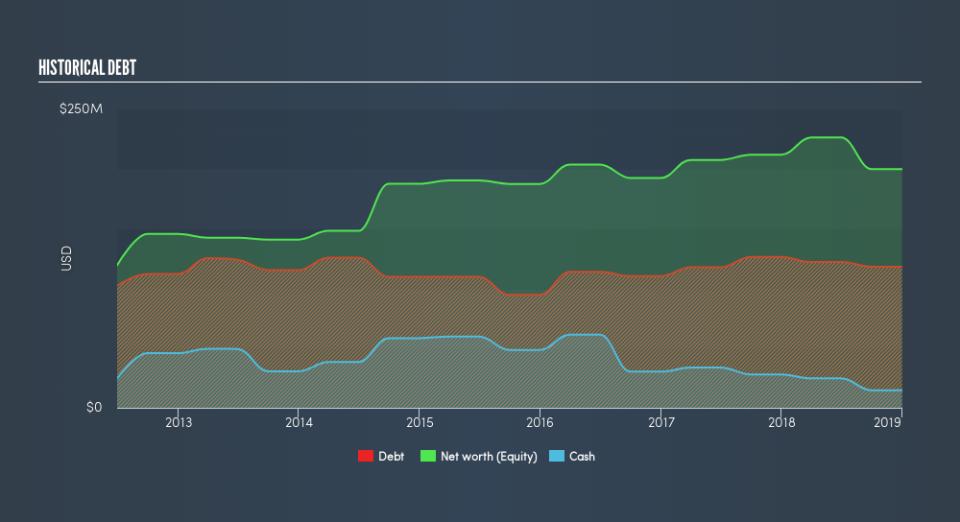PureCircle Limited (LON:PURE): Time For A Financial Health Check

Want to participate in a short research study? Help shape the future of investing tools and you could win a $250 gift card!
While small-cap stocks, such as PureCircle Limited (LON:PURE) with its market cap of UK£507m, are popular for their explosive growth, investors should also be aware of their balance sheet to judge whether the company can survive a downturn. Since PURE is loss-making right now, it’s crucial to evaluate the current state of its operations and pathway to profitability. We'll look at some basic checks that can form a snapshot the company’s financial strength. However, this is just a partial view of the stock, and I’d encourage you to dig deeper yourself into PURE here.
Does PURE Produce Much Cash Relative To Its Debt?
Over the past year, PURE has reduced its debt from US$126m to US$118m , which also accounts for long term debt. With this debt payback, PURE currently has US$15m remaining in cash and short-term investments to keep the business going. Moreover, PURE has produced cash from operations of US$5.9m over the same time period, resulting in an operating cash to total debt ratio of 5.0%, signalling that PURE’s current level of operating cash is not high enough to cover debt.
Can PURE pay its short-term liabilities?
At the current liabilities level of US$46m, it seems that the business has been able to meet these commitments with a current assets level of US$179m, leading to a 3.92x current account ratio. The current ratio is the number you get when you divide current assets by current liabilities. However, many consider a ratio above 3x to be high.
Can PURE service its debt comfortably?
With debt reaching 59% of equity, PURE may be thought of as relatively highly levered. This is a bit unusual for a small-cap stock, since they generally have a harder time borrowing than large more established companies. However, since PURE is currently unprofitable, there’s a question of sustainability of its current operations. Maintaining a high level of debt, while revenues are still below costs, can be dangerous as liquidity tends to dry up in unexpected downturns.
Next Steps:
Although PURE’s debt level is towards the higher end of the spectrum, its cash flow coverage seems adequate to meet obligations which means its debt is being efficiently utilised. Since there is also no concerns around PURE's liquidity needs, this may be its optimal capital structure for the time being. Keep in mind I haven't considered other factors such as how PURE has been performing in the past. You should continue to research PureCircle to get a better picture of the small-cap by looking at:
Future Outlook: What are well-informed industry analysts predicting for PURE’s future growth? Take a look at our free research report of analyst consensus for PURE’s outlook.
Historical Performance: What has PURE's returns been like over the past? Go into more detail in the past track record analysis and take a look at the free visual representations of our analysis for more clarity.
Other High-Performing Stocks: Are there other stocks that provide better prospects with proven track records? Explore our free list of these great stocks here.
We aim to bring you long-term focused research analysis driven by fundamental data. Note that our analysis may not factor in the latest price-sensitive company announcements or qualitative material.
If you spot an error that warrants correction, please contact the editor at editorial-team@simplywallst.com. This article by Simply Wall St is general in nature. It does not constitute a recommendation to buy or sell any stock, and does not take account of your objectives, or your financial situation. Simply Wall St has no position in the stocks mentioned. Thank you for reading.

 Yahoo Finance
Yahoo Finance 
